
 Differentiating between SVT with aberrancy versus VT can be very difficult. It is crucial to be able to make this distinction as therapeutic decisions are anchored to this differentiation. Brugada et al prospectively analyzed 384 patients with VT and 170 patients with SVT with aberrant conduction to see if it was possible to come up with a simple criteria to help differentiate between the two with high sensitivity and specificity.
Differentiating between SVT with aberrancy versus VT can be very difficult. It is crucial to be able to make this distinction as therapeutic decisions are anchored to this differentiation. Brugada et al prospectively analyzed 384 patients with VT and 170 patients with SVT with aberrant conduction to see if it was possible to come up with a simple criteria to help differentiate between the two with high sensitivity and specificity.
The Brugada criteria algorithm involves 4 sequential questions. If at any point, the answer is YES, then it is VT. [1]
1. Is there an absence of an RS complex in all precordial leads?
- Yes = VT (Sensitivity 0.21, specificity 1.0)
- No = Next question
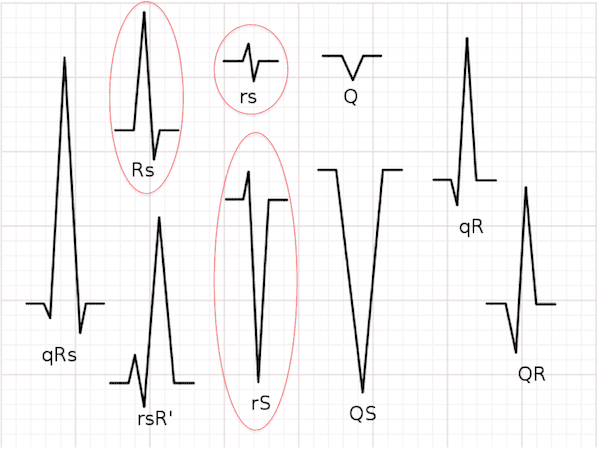
2. Is the R to S interval >100 msec (2.5 small boxes) in one precordial lead?
- Yes = VT (Sensitivity 0.66, specificity 0.98)
- No = Next question
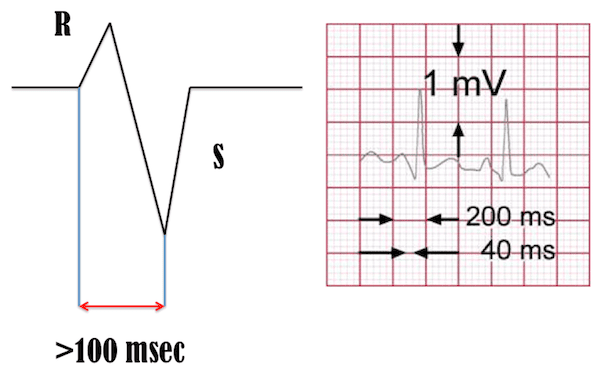
3. Is there atrioventricular (AV) dissociation?
- Yes = VT (Sensitivity 0.82, specificity 0.98)
- No = Next Question

- AV Dissociation = Ventricular rate is same or faster than the atrial rate
- Complete Heart Block = Atria are beating independent of ventricles with atrial rate being faster than ventricular rate
4. Is there morphology criteria for VT present in precordial leads V1/V2 and V6?
- Yes = VT (Sensitivity 0.987, specificity 0.965)
- No = SVT with Aberrant Conduction (Sensitivity 0.965, specificity 0.987)
- Determine if you have a LBBB morphology (dominant S wave in V1) or a RBBB morphology (dominant R wave in V1) then use the appropriate section below to help differentiate.
4a. LBBB Morphology: Dominant S Wave in V1 or V2
- Lead V1 morphology consistent with VT:
- R wave > 30 msec (PPV 0.96)
- RS interval > 60 msec (PPV 0.96), as measured from R wave onset to S wave nadir
- Notched S Wave (Josephson’s Sign)
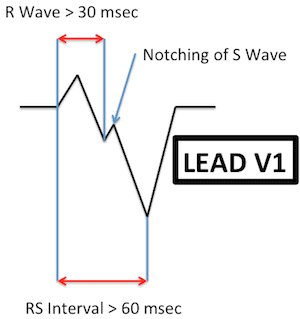
- Lead V6 morphology consistent with VT:
- QS complex (PPV 1.0)
- qR wave (PPV 1.0)
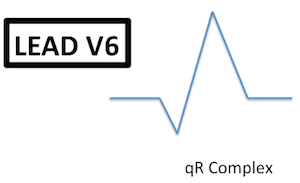
4b. RBBB Morphology: Dominant R Wave in V1 or V2
- Lead V1 morphology consistent with VT:
- Smooth, monophasic R wave (PPV 0.78)
- Notched downslope to R wave (PPV 0.90)
- qR wave (PPV 0.95)
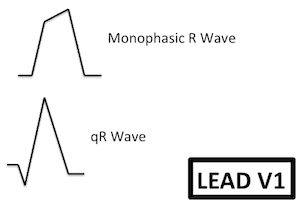
- Lead V6 morphology consistent with VT:
- QS complex (PPV 1.0)
- R/S Ratio < 1 (PPV 0.87)
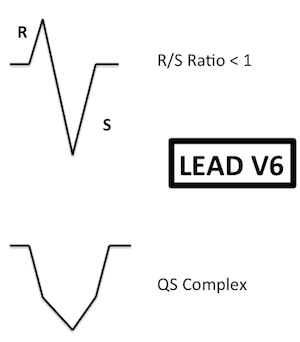
Following the above stepwise approach can help differentiate between SVT with aberrancy and VT with very good sensitivity and specificity.
References:
- Brugada P et al. A New Approach to the Differential Diagnosis of a Regular Tachycardia with a Wide QRS Complex. Circulation 1991. PMID: 2022022
The post SVT With Aberrancy Versus VT appeared first on REBEL EM - Emergency Medicine Blog.
